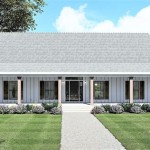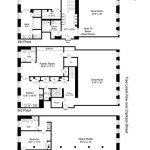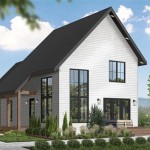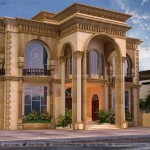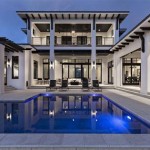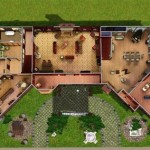Home Plans With Lots of Windows: Maximizing Light and Views
Designing a home involves numerous decisions, one of the most impactful being the integration of windows. Home plans incorporating a significant amount of window space are increasingly sought after, offering homeowners numerous aesthetic and practical advantages. These designs capitalize on natural light, enhance interior aesthetics, and blur the line between indoor and outdoor living. This article explores the considerations, benefits, and architectural implications of home plans prioritizing extensive window coverage.
The term "lots of windows" is subjective and can vary based on the overall size and style of the home. Generally, this refers to designs where window area constitutes a substantial portion of the wall space, exceeding typical building standards. This can involve large picture windows, expansive window walls, strategically placed skylights, and multiple smaller windows grouped to maximize light penetration. The placement and type of windows are crucial to optimizing both functionality and aesthetic appeal.
Key Considerations in Window-Centric Home Design
Before embarking on a home design emphasizing abundant windows, several key factors require careful consideration. These factors include the location of the home, its orientation relative to the sun, local climate conditions, privacy concerns, and energy efficiency.
Location and Orientation: The geographic location significantly impacts the suitability of a window-heavy design. Homes in regions with ample sunlight greatly benefit, while those in climates with limited daylight may require supplementary lighting despite the large windows. The orientation of the home, specifically which direction the large windows face, is crucial. South-facing windows capture the most sunlight in the Northern Hemisphere, offering warmth in winter, while east-facing windows provide morning light and west-facing windows receive intense afternoon sun. North-facing windows provide diffused, indirect light, ideal for studios or spaces requiring consistent illumination.
Climate Considerations: In hot climates, large expanses of glass can lead to significant heat gain, necessitating careful planning to mitigate overheating. This may involve incorporating overhangs, awnings, and strategically placed trees to provide shading. Window films and spectrally selective glazing can also reduce solar heat gain while allowing visible light to pass through. In colder climates, ensuring proper insulation around windows and selecting energy-efficient window technology is paramount to minimizing heat loss and reducing energy consumption. Double- or triple-pane windows with low-E coatings are essential in such environments.
Privacy: While large windows offer unobstructed views, they can also compromise privacy. Strategies to address this include incorporating landscaping elements to shield the windows from direct view, using window coverings such as blinds, shades, or curtains, or opting for textured or frosted glass in certain areas. The placement of windows should also be considered in relation to neighboring properties, ensuring that ample privacy is maintained.
Energy Efficiency: Large windows can impact a home's energy efficiency. Selecting energy-efficient windows becomes crucial. The U-factor, which measures the rate of heat transfer, and the Solar Heat Gain Coefficient (SHGC), which indicates how much solar radiation passes through the window, are important metrics to consider. Lower U-factors indicate better insulation, while lower SHGC values indicate less solar heat gain. Argon or krypton gas fills between the panes of glass further enhance insulation performance. Proper installation and sealing of windows are also essential to prevent air leaks and improve energy efficiency.
Architectural Styles That Embrace Large Windows
Certain architectural styles naturally lend themselves to designs incorporating a significant number of windows. These styles often emphasize open floor plans, clean lines, and a connection to the surrounding environment.
Modern and Contemporary Designs: Modern and contemporary homes frequently feature large windows and expansive glass walls. These designs often prioritize natural light and unobstructed views, creating a seamless transition between indoor and outdoor spaces. Open floor plans and minimalist aesthetics are common characteristics, further enhancing the impact of the windows.
Mid-Century Modern: This style, popular in the mid-20th century, is characterized by clean lines, flat roofs, and large expanses of glass. Mid-century modern homes often feature floor-to-ceiling windows and sliding glass doors, connecting the interior spaces with the surrounding landscape. The emphasis is on simplicity, functionality, and a harmonious integration with nature.
Scandinavian Design: Characterized by simplicity, functionality, and a focus on natural light, Scandinavian design often incorporates large windows to maximize the use of daylight, particularly in regions with long winters and limited sunlight. Light-colored walls and minimalist furnishings further enhance the brightness and airiness of the interior spaces.
Farmhouse Style (Modern Farmhouse): While traditionally associated with smaller windows, the modern farmhouse style often incorporates larger windows to bring in more natural light and connect the home with its rural surroundings. This style combines the rustic charm of traditional farmhouses with modern amenities and design elements.
Benefits of Home Plans with Abundant Window Space
The benefits of home plans featuring numerous windows extend beyond mere aesthetics, influencing mood, health, and overall livability.
Enhanced Natural Light: Perhaps the most significant benefit is the increased amount of natural light. Sunlight has been shown to elevate mood, improve productivity, and enhance overall well-being. Natural light also reduces the need for artificial lighting, leading to energy savings and a more sustainable lifestyle.
Improved Views and Connection to Nature: Expansive windows provide unobstructed views of the surrounding landscape, fostering a connection to nature. This connection can reduce stress, improve mental clarity, and create a sense of tranquility within the home. Natural views also enhance the aesthetic appeal of the interior spaces, creating a more visually stimulating and engaging environment.
Enhanced Ventilation: Strategically placed operable windows can significantly improve natural ventilation, reducing the reliance on air conditioning and promoting healthier indoor air quality. Cross-ventilation, achieved by placing windows on opposite sides of the home, allows for the circulation of fresh air, removing stale air and pollutants.
Increased Property Value: Homes with well-designed and strategically placed windows often command a higher market value. The aesthetic appeal, energy efficiency, and enhanced living experience contribute to the desirability of these properties, making them a sound investment.
Aesthetic Appeal: Abundant window space often makes a home appear more spacious and open. Natural light emphasizes the interior design, highlighting materials and architectural details. Windows can also act as design features. Large picture windows can frame specific views, turning them into living art. Unique window shapes and configurations can contribute to the overall character of the home.
Careful consideration is required when planning a home with abundant windows. By addressing the factors outlined here, homeowners can create spaces that are both beautiful and functional, capitalizing on the numerous benefits of natural light and enhanced views while maintaining energy efficiency and privacy.

Home Plans With Lots Of Windows For Great Views

House Plans With Windows For Great Views

Beach Home Plans Choosing Your Ideal Dfd House Blog

Modern Luxury Today What S New In Home Design Trends At The Lake

Plan 35484gh Mountain Home With Dramatic Two Story Windows House Plans Floor

Home Plans With Lots Of Windows For Great Views

Appalachia Mountain A Frame Lake Or House Plan With Photos Plans Rustic

House Floor Plans Your Best Guide To Home Layout Ideas Decorilla Interior Design

Affordable Home Ch66 House Design To Narrow Lot Plan
House Plan Of The Week Rustic Retreat Builder

